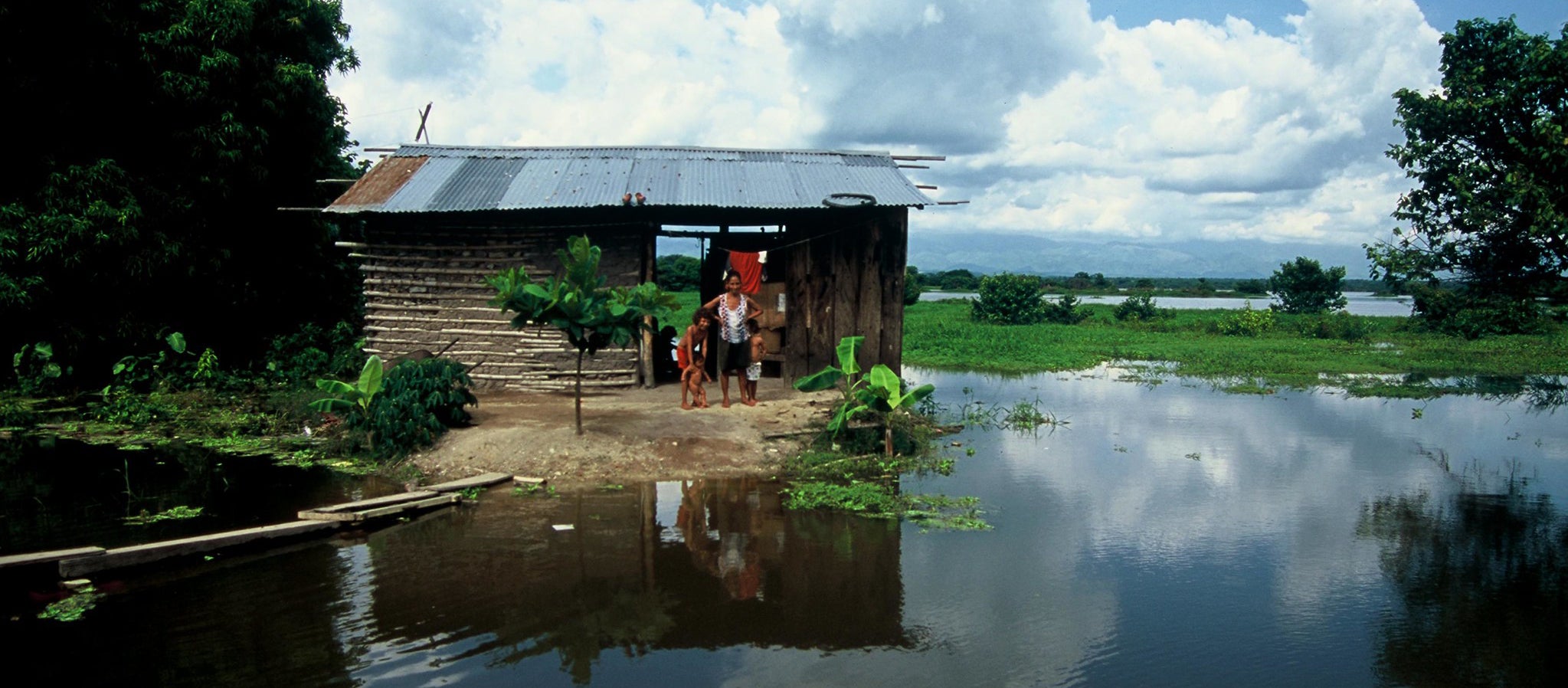 A family whose home in Colombia floods every year creates hazardous living conditions. © Scott Wallace/World Bank
A family whose home in Colombia floods every year creates hazardous living conditions. © Scott Wallace/World Bank
I have read the many reports that summarize the dire state of the climate and our planet’s worsening prospects. I know the hard statistics documenting rising temperatures, the increasing intensity of natural disasters and warmer seas. I have been meeting with representatives from developing countries who have one request: we need less talk and more action on climate.
In developing countries, governments with few resources are trying to figure out how to raise living standards and lift people out of poverty, while at the same time reducing emissions and adapting their economic model to harsher and more variable weather patterns.
In May last year, torrential rains uprooted hundreds of thousands of people across East Africa with 260,000 displaced in Kenya, half a million in Somalia. The floods came just as many people were recovering from drought and famine that had swept the Horn and East Africa region the previous season, slowing crop production, driving food prices higher, increasing inflation, and reducing economic growth.
The complexity of the challenge is even more acute in fragile states where governments often have limited means to help their populations adapt. But here the incentives for action are just as strong because neglecting climate-related issues can exacerbate political, economic and social stresses.
To protect people and our planet and grow the economy at the same time, governments need to act with a sharp focus on four dimensions : introducing policies to reduce emissions and boost adaptation; stimulating private investments in climate action, because public finance alone will not be enough; addressing the needs of marginalized and vulnerable populations; and helping the people and households who are feeling the immediate impacts of climate change.
First, with the right adjustments to policy frameworks, countries can encourage more investments to tackle climate change and support low-carbon growth. In this context, the UK has shown what can be done, reducing greenhouse gas emissions by around 40% while simultaneously achieving a 75% increase in real gross domestic product between 1990 and 2018.
More countries are now embracing this challenge and filling the fiscal policy void in the climate discussion. Formed in April this year, the 50-member strong Coalition of Finance Ministers for Climate Action, led by Finland and Chile, has championed action through fiscal policy, private finance and smart public spending. This agenda is captured in the ‘Helsinki Principles,’ and the coalition will support ministers with technical assistance and sharing policies ideas that work.
Second, good policies can help unleash major investments from the private sector. For example, the World Bank Group’s private sector arm is working to boost investments in renewables in developing countries to increase electricity access and tap into falling prices for wind and solar. Most recently, we helped the Senegalese government use the ‘scaling solar’ approach to set a new benchmark of roughly 5 US cents per kilowatt hour of power, one of the cheapest sources of electricity in the whole of sub-Saharan Africa. With battery storage costs falling by two thirds, the energy revolution provides new options for on and off grid solutions in poor countries.
Third, while the focus of climate discussions is often on large countries and big sources of emissions, this ought not ignore the plight of smaller countries or vulnerable people that are already dealing with the effects of climate change.
We know, for example, that for small islands in the Caribbean and the Pacific the intensity of storms has increased, and the damage done to these countries can range from 25 to over 200 percent of GDP. More resilient infrastructure, housing and public services are essential, and being ready to ‘build back better’ if disaster strikes. It is for this reason that small island states have been among the main beneficiaries of the World Bank’s financing for the poorest countries.
Finally, effective policies focus on people who are already feeling the effects of a warmer planet. Generally, our teams are shifting increasingly to help countries and communities adapt, and this effort now represents 50 percent of our climate-related investments.
For the very poor, seemingly small measures can make a big difference. At a household level, for example, the World Bank is helping people switch to clean cookstoves. Nearly three billion people currently cook with firewood or charcoal each day, causing grave impacts on health and the environment. Replacing traditional wood and coal-burning cookstoves with cleaner technology could trim nearly a tenth of a degree from global temperature and save more than 10 million lives by 2050.
To meet the enormous challenges posed by climate change, we must act collectively around the world, and take decisive action. IDA, the Bank’s fund for the poorest countries, made climate as a priority as early as 2008. Across the full resources of the Bank Group, our ambition is being translated into increasing climate-related investments of around $335 billion in total by 2030. This is a sharp contrast over the previous decade of climate-related investments which totaled around $120 billion from 2010-2019.
The World Bank Group is taking a serious and comprehensive approach and using all the tools at its disposal to integrate climate change considerations into its operations. Approaches that support resilient, clean and inclusive growth will drive our dialogue and action with governments in the years ahead.
A version of this article was originally published by Les Echos.


Join the Conversation